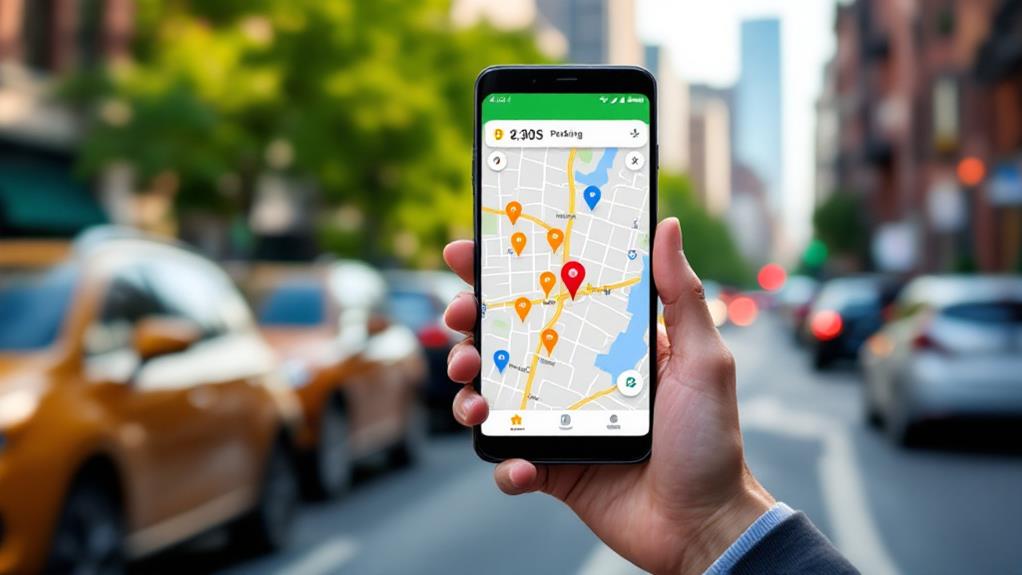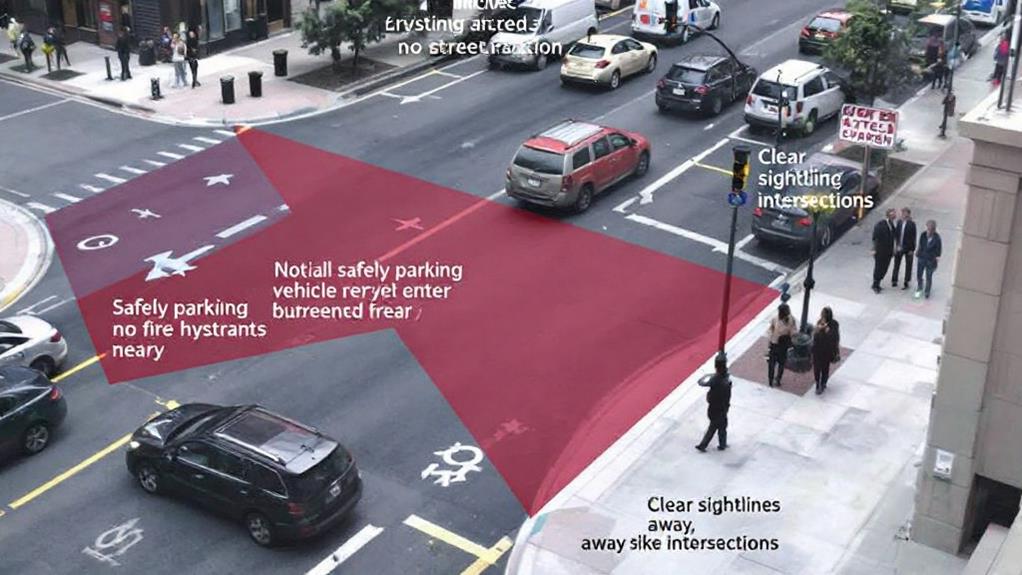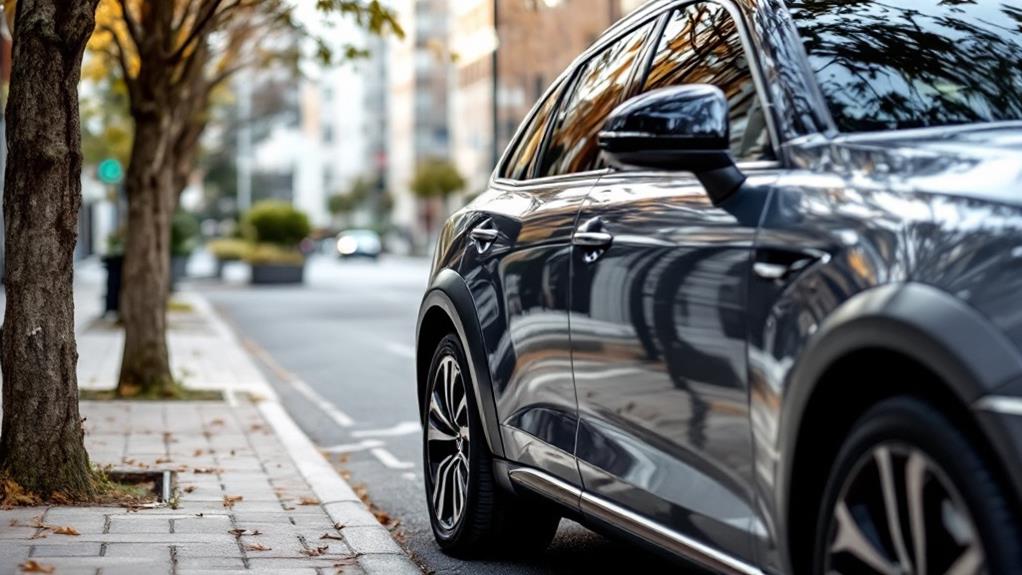Street Parking Safety Tips for New Drivers
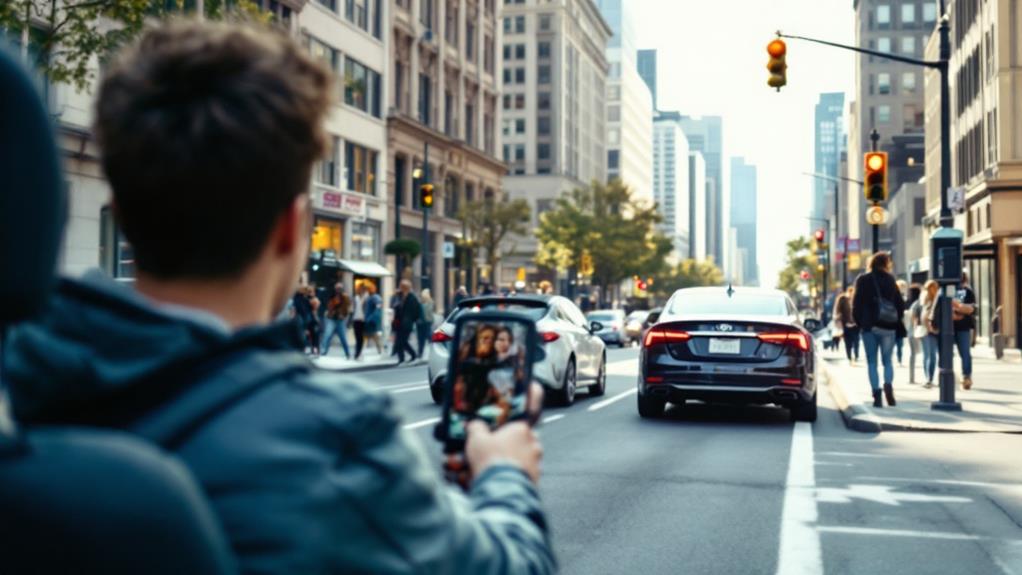
When street parking, prioritize safety by choosing well-lit spots with good visibility. Always check local regulations and pay attention to signage for restrictions. Protect your vehicle by using anti-theft devices and parking in open areas when possible. Hone parallel parking techniques through practice, and stay alert for pedestrians and other vehicles in busy areas. Maintain your car regularly, ensuring brakes, tires, and lights are in good condition. Remember to lock your doors, hide essential items, and be aware of your surroundings when returning to your vehicle. By following these tips, you'll enhance your street parking skills and overall driving confidence. There's much more to learn about maneuvering urban parking challenges safely and efficiently.
Understand Local Parking Regulations
Before hitting the streets, it's essential to understand local parking regulations. As a new driver, you'll need to familiarize yourself with the specific parking rules in your area. Start by checking your city's official website or mobile app for the most up-to-date information on parking regulations, restrictions, and time limits. These resources will provide you with necessary details about where and when you can park legally.
Pay close attention to signage indicating prohibited parking zones, permit requirements, and special event restrictions. These signs are pivotal for avoiding fines and making sure you're parked safely and legally. Additionally, take the time to learn about your city's parking enforcement policies and the penalties for violating parking rules. This knowledge will help you make informed decisions when parking on the street.
To stay on top of parking regulations, consider downloading a parking app. These apps can provide real-time updates on changes to parking rules and send alerts before your parking session expires. Finally, always follow directional arrows and park within designated lines to avoid obstructing traffic or blocking other vehicles. By understanding and adhering to local parking regulations, you'll guarantee a safer and more stress-free driving experience.
Choose Your Spot Wisely
Selecting the right parking spot is crucial for both your safety and your vehicle's protection. When you're looking for a place to park, prioritize well-lit, open areas that offer good visibility. These spots reduce the risk of your car getting blocked in or hit by other vehicles. In parking lots, avoid spaces under trees to prevent damage from tree sap and bird droppings, which can harm your car's paint and finish.
If you're parallel parking on the street, consider corner spots. They're often easier to maneuver into and provide less chance of being blocked or experiencing bumper damage. Before settling on a spot, always check for signs indicating parking restrictions or time limits to avoid getting a ticket.
To make your parking experience smoother, use a parking app or map to familiarize yourself with the area. These tools can help you identify the safest and most convenient parking options available. By taking the time to choose your spot carefully, you'll not only protect your vehicle but also guarantee a stress-free parking experience. Remember, a little extra effort in selecting the right parking spot can save you time, money, and hassle in the long run.
Protect Against Theft and Damage

Now that you've found the ideal parking spot, it's time to focus on protecting your vehicle from theft and damage. While street parking is convenient, it can leave your car vulnerable to various risks. To enhance parking safety, invest in anti-theft devices like steering wheel locks, wheel clamps, and Faraday bags. These deterrents can greatly reduce the likelihood of your vehicle being stolen.
Environmental factors pose another threat to your car's condition. Keep cleaning supplies handy to quickly address issues like bird droppings and tree sap, which can damage your paint if left unattended. Regular washing, ideally every two weeks, will protect the clear coat and maintain your car's appearance.
Consider using parking garages when possible, as they offer better protection against theft, vandalism, and environmental damage compared to street parking. If you must park on the street, be vigilant about potential hazards like acid rain and salt that can corrode your vehicle over time.
Master Parallel Parking Techniques
Are you anxious about parallel parking? Don't worry; becoming skilled at this skill is easier than you think. To start, align your car's rear bumper with the rear bumper of the vehicle in front of your desired parking space. Turn your wheels sharply and begin reversing into the spot. As you back up, use your side mirrors and look over your shoulder to monitor your position.
When your car is centered in the parking space, guarantee your wheels are at a 45-degree angle. Adjust as needed to straighten out. Perfect the "pull-up" technique by straightening your wheels and driving forward slightly to center your vehicle in the spot.
To build confidence and improve your parallel parking skills, practice in a safe, well-lit area. Repetition is key to becoming skilled at this technique. Remember, it's not just about getting into the space; it's about doing it safely and efficiently.
While parking lots offer more room for maneuvering, street parking requires precision. By following these steps and practicing regularly, you'll soon become proficient at parallel parking, making it a stress-free part of your driving routine.
Stay Alert in Parking Lots
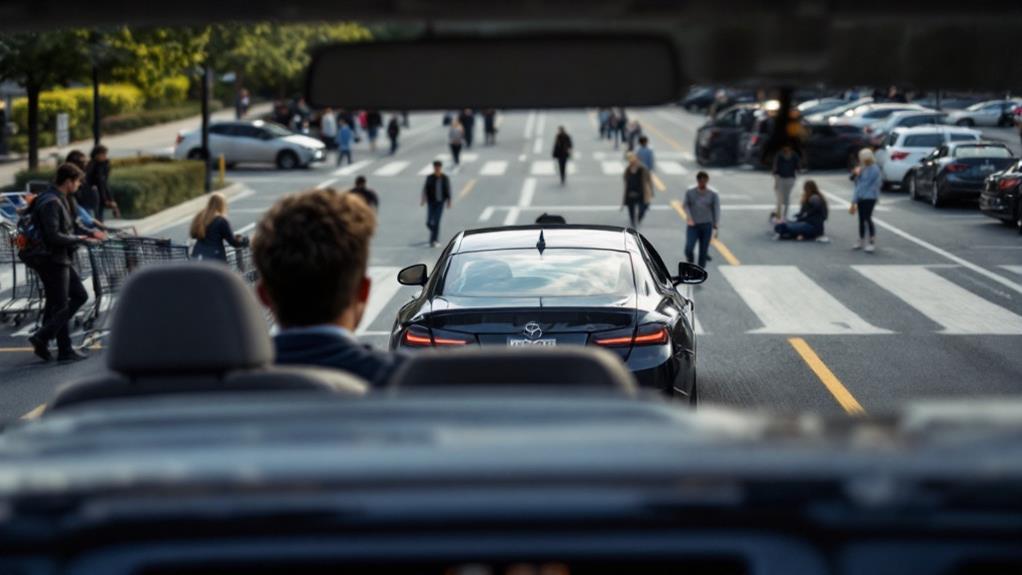
Parking lots can be deceptively dangerous for new drivers. Despite their seemingly low-speed environment, these areas demand heightened awareness due to the prevalence of distractions. Shockingly, 66% of drivers feel comfortable using their phones while driving in parking lots, a behavior that dramatically increases accident risk.
When driving in a parking lot, it's essential to prioritize safety by paying attention to your surroundings. Avoid common distractions like programming GPS, texting, or using social media. Instead, focus on:
- Driving slowly and cautiously
- Watching for pedestrians and other vehicles
- Following directional signs and road rules
- Staying off your phone until you're parked
- Being prepared to stop suddenly
Maintain Your Vehicle Regularly
Maintaining your vehicle regularly is critical for ensuring safety while street parking. Your car's condition directly impacts your ability to park safely and securely on busy streets. Start by checking your brakes frequently, as they're indispensable for controlled stops when maneuvering into tight spaces. Ensure your tires are properly inflated and have sufficient tread depth to provide ideal grip, especially on wet or uneven surfaces.
Don't neglect your car's lights and signals. Functional headlights, taillights, and turn signals are essential for visibility and communicating your intentions to other drivers when parking. Regularly inspect and replace wiper blades to maintain clear visibility in various weather conditions. Keep your mirrors clean and properly adjusted for a comprehensive view of your surroundings.
Take care of your car's battery to avoid unexpected breakdowns while parked. Regularly check fluid levels, including oil, coolant, and power steering fluid. A well-maintained engine contributes to smoother parking maneuvers and reduces the risk of stalling in inconvenient locations. By prioritizing vehicle maintenance, you'll enhance your safety and confidence when street parking in any situation.
